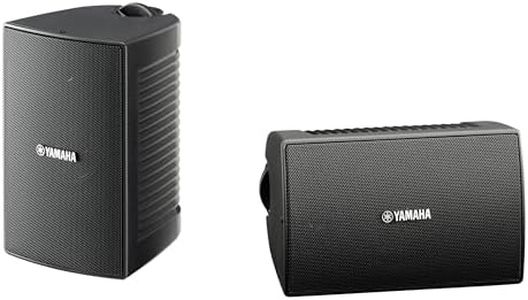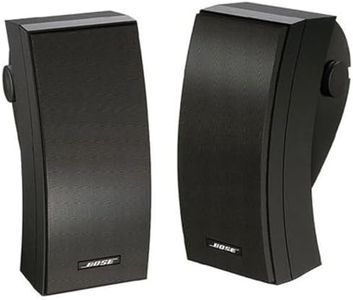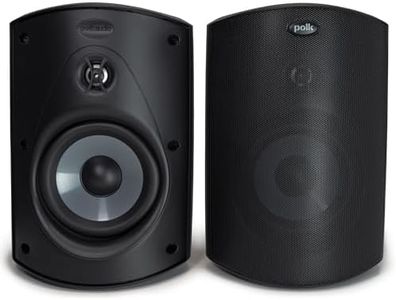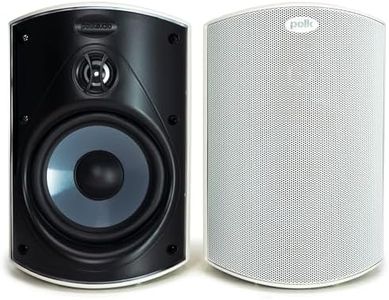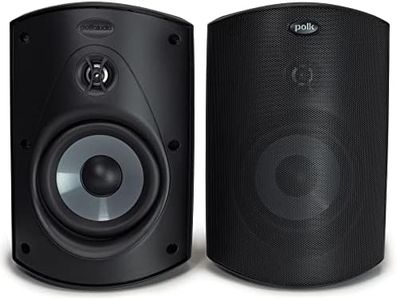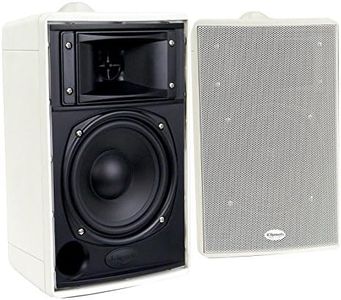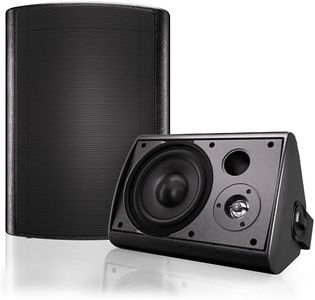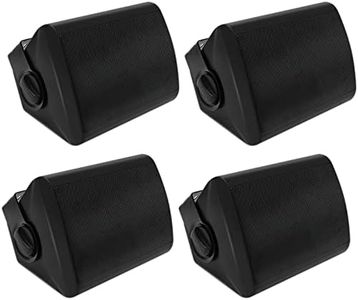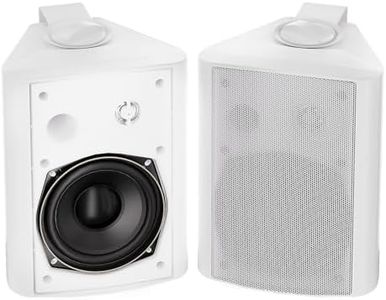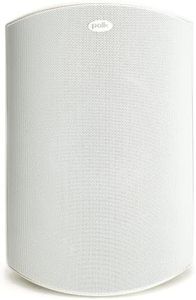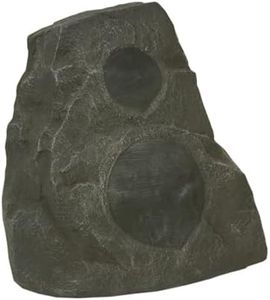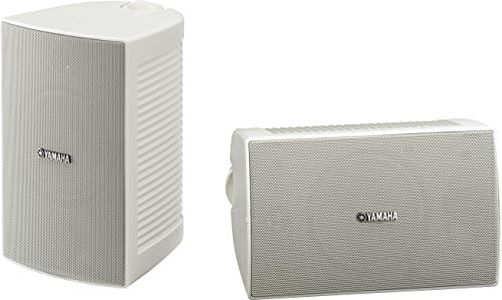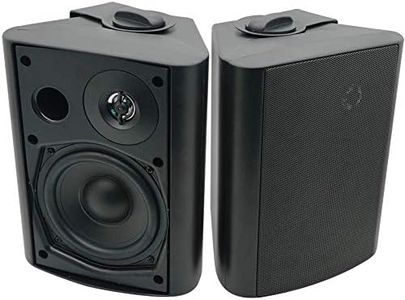We Use CookiesWe use cookies to enhance the security, performance,
functionality and for analytical and promotional activities. By continuing to browse this site you
are agreeing to our privacy policy
10 Best Outdoor Wall Speakers
From leading brands and best sellers available on the web.Buying Guide for the Best Outdoor Wall Speakers
Choosing outdoor wall speakers is an exciting way to enhance your backyard, patio, or garden experience. Since outdoor environments present unique challenges compared to indoor spaces, it’s important to pick speakers designed specifically for the outdoors. This ensures durability and optimal performance in varying weather. The right choice will depend on where you intend to mount them, how loud you want the sound to be, what you’ll be listening to, and your environment’s conditions. Pay special attention to weather resistance, sound quality, and installation ease to ensure long-lasting enjoyment.Weatherproof RatingThe weatherproof rating measures how resistant the speakers are to conditions like rain, snow, sun, and dust. This is usually indicated by an IP (Ingress Protection) rating or a mention of UV, rust, and waterproof features. Higher IP ratings mean better protection: for example, IP55 offers good dust and water protection, while lower ratings like IPX4 resist some splashes but not full exposure. If your speakers will be fully exposed to the elements, go for higher ratings; for covered patios, basic splash resistance might be enough. Always match the weatherproofing level to your area’s weather extremes and the exact speaker placement.
Power Handling (Wattage)Power handling, often described as wattage (measured in Watts), tells you how much power a speaker can handle from an amplifier without being damaged. Generally, higher wattage means the speaker can play louder and handle more dynamic sound. For small patios or background music, lower wattages (20-50W) are sufficient, while larger spaces or party environments benefit from higher wattages (60-100W or more) for clearer, more powerful sound. Consider your space size and how loudly you plan to play your music—choose a power level that is appropriate so you don’t under- or over-power your speakers.
Speaker Size (Driver Size)Speaker or driver size, measured in inches, determines how much air the speaker can move, affecting both sound volume and quality. Smaller drivers (4-5 inches) are compact and blend in easily, ideal for subtle background music in smaller spaces. Medium drivers (6-6.5 inches) offer a balance of size and fuller sound for typical backyard areas. Larger drivers (8 inches or more) deliver stronger bass and louder volume, best for big open spaces or if you enjoy parties and cinematic experiences outdoors. Think about your volume needs, music style, and space size to select the driver size that’s best for you.
Mounting and Placement OptionsMounting and placement options refer to how and where you can securely install the speakers on your wall. Some speakers come with adjustable brackets for angling and aiming the sound, while others have fixed mounts. Consider how easy the mounting hardware is to use and whether you need to swivel or tilt the speaker. For optimal sound, place speakers high on walls, directed towards the listening area. Think about your available mounting spots and whether you need flexibility in directing sound when choosing your speaker’s mounting system.
Connectivity (Wired vs. Wireless)Connectivity is about how you send sound to your outdoor speakers. Wired speakers require running speaker cables to a receiver or amplifier, ensuring stability and high sound quality but requiring more setup. Wireless (including Bluetooth or Wi-Fi enabled) speakers offer easy installation and the ability to stream from mobile devices, although they may need to be plugged into power and might have a slightly lower sound quality. Choose wired for a permanent, high-quality setup in areas where running cables is practical; choose wireless for easy setup, rental properties, or when you want to avoid running wires outdoors.
Frequency ResponseFrequency response tells you the range of sounds the speaker can reproduce, from low bass to high treble (measured in Hertz, like 60Hz-20kHz). A wider range means the speaker can play both deep lows and crisp highs, which is important for full, rich music. Basic outdoor speakers might sacrifice some bass to keep size and costs down (starting at 80-100Hz), while speakers aiming for fuller sound reach lower frequencies for punchy bass. If you mostly listen to vocals or podcasts outdoors, frequency range is less critical, but music lovers or movie watchers should look for broader frequency ranges for a better listening experience.
